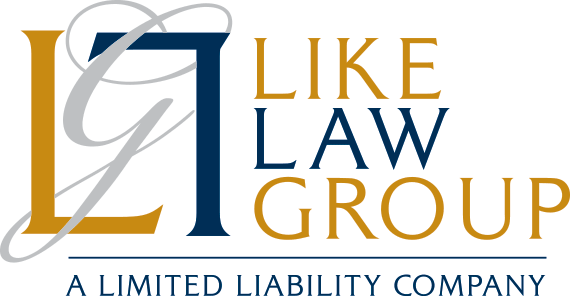The notion that your estate plan contains a defect would not normally be welcomed as good news. But despite the moniker, an intentionally defective grantor trust (IDGT) can be an advantageous tool for minimizing estate taxes and maximizing the money and property that are passed on to a spouse, descendants, or other beneficiaries.
The defect in this case refers to trust provisions that make the grantor (the person creating the trust)—not the trust—the trust owner and therefore liable for trust income taxes. By not having annual income taxes come directly out of the trust’s money and property, more value remains for beneficiaries. Further, the appreciation of accounts and property is excluded from the trust owner’s taxable estate.
How an Intentionally Defective Grantor Trust Works
Typically used by wealthy families to preserve intergenerational wealth, IDGTs are a type of irrevocable trust best suited to holding appreciating assets, such as real estate and securities.
These assets are held outside of the grantor’s estate for transfer tax purposes (gift and estate tax), but for federal income tax purposes, they are treated as though they are owned by the grantor. Thus, the grantor pays income tax on the appreciation of the assets placed in the trust, but the appreciation of those assets is excluded from the grantor’s estate, which amounts to a tax-free gift to the trust. In other words, once the assets are placed in the trust, their value is effectively frozen. Any appreciation that occurs does so outside of the grantor’s estate.
The “defective” part of this arrangement is the intentional inclusion of a right of power that results in the grantor being treated as the trust owner from an income tax standpoint. These powers are found in §§ 671–679 of the Internal Revenue Code and include the right to take the following actions:
- Reacquire assets already placed in the trust and substitute them for other assets
- Take loans from the trust
- Change the beneficiary of the trust
As an example, suppose the grantor wants to set up an IDGT to benefit the grantor’s children. The grantor funds the trust with $10 million in assets that earn 5 percent annually. Over thirty years, the $10 million initial investment would grow to $43 million.1 If those same assets were held in a nongrantor trust, that $10 million would grow to only $24 million as a result of the trust paying income taxes on the assets. As a result, assets held in an IDGT would be worth almost $20 million more over the thirty-year period.
At the time of transfer (i.e., when the grantor dies and the trust transfers to the beneficiaries), only the initial $10 million investment—not the current $43 million value—counts towards the federal unified gift and estate tax exemption ($12.06 million in 2022). Transfers that exceed this amount are taxed at 18–40 percent.
Even better, as time passes and the value of the trust assets continues to grow, the tax-free benefit of this growth only increases. As an added benefit, the assets placed in the IDGT enjoy protection from creditors and other parties, such as the spouse of a divorcing beneficiary. Plus, since the trust is a grantor trust, the grantor has some ability to control the trust during their lifetime. This differs from most irrevocable trusts that do not contain grantor trust provisions and which force the grantor to give up all rights and powers over the trust and its assets.
Two Ways to Fund an IDGT
IDGTs can be funded in one of two ways: with a completed gift or an installment sale.
- Funding an IDGT with a gift is the most common and straightforward way to place assets in the trust. It simply entails deciding which assets will be held in the trust and then making an irrevocable gift to the trust. This method is most beneficial for appreciating assets because it allows the grantor to pay income taxes on the assets over the years, but additional transfer taxes are avoided if the assets appreciate. However, the grantor may have to pay gift taxes on the gifted trust assets if they exceed the annual exclusion amount ($16,000 in 2022).2
- Funding an IDGT with an installment sale is also an option. In this scenario, the grantor makes a small seed gift to the trust. Absent a guarantee of the note, a seed gift is necessary to give the installment sale transaction economic substance. An installment sale involves selling appreciating assets to the trust in exchange for an interest-bearing promissory note payable by the trust. The IDGT is a grantor trust, which means that the installment sale amounts to the grantor selling assets to themselves. The benefit of this arrangement is that any gains from the sale are tax-free. The grantor may choose to earn income from the installments or make interest payments to the trust and grow its value for the benefit of heirs.
Important IDGT Legal Considerations
An IDGT can be set up as a dynasty trust (a trust spanning multiple generations) to provide for long-term wealth preservation that is not subject to estate taxes when the beneficiary passes away. But dynasty trusts cannot be established in every state due to the rule against perpetuities that limits how long a trust may legally exist. Some states, including Delaware, Nevada, and South Dakota, have eliminated the rule against perpetuities, while others have modified it. If you want to set up an IDGT as a dynasty trust, be mindful of state laws where you live.
To fully realize the benefits of an IDGT, the trust must be properly structured. The Tax Adviser, a publication of the American Institute of CPAs, notes that an improperly structured IDGT could result in the trust being included in the grantor’s estate, which might increase the amount of estate taxes owed. This could happen, for example, if the grantor keeps certain powers over the trust. Another possible outcome of an improperly structured IDGT is that the trust would no longer be considered a grantor trust, eliminating the added flexibility that this type of trust gives to the grantor.
A well-considered estate plan can contain tools like IDGTs that help maximize the money and property that are passed on to the next generation and protect family wealth. An IDGT can provide benefits to both grantor and beneficiaries but must be appropriately drafted and funded to get the most out of it. Some in the tax and legal community feared that the Inflation Reduction Act would lower the estate and gift tax exemption. While these provisions were not included in the law, funding an IDGT now at the current historically high exemption amounts might be a smart move.
A basic estate plan that includes a will, powers of attorney, and healthcare directives is just the start. High-net-worth individuals may require a more sophisticated plan that involves tools like an IDGT. To discuss this unique type of trust and your unique estate planning needs with our attorneys, please schedule an appointment and let us know how we can help.
Footnotes
- Andrew Seiken, Maximize Next Generation Assets with Intentionally Defective Grantor Trusts, BNY Mellon, https://www.bnymellonwealth.com/articles/strategy/maximize-next-generation-assets-with-intentionally-defective-grantor-trusts.jsp (last visited Oct. 25, 2022).
- Frequently Asked Questions on Gift Taxes, IRS.gov, https://www.irs.gov/businesses/small-businesses-self-employed/frequently-asked-questions-on-gift-taxes (last visited Oct. 25, 2022).
- Barbara Bryniarski, Helping a Client Benefit from an Intentionally Defective Grantor Trust, Tax Adviser (Nov. 11, 2021), https://www.thetaxadviser.com/newsletters/2021/nov/helping-client-benefit-intentionally-defective-grantor-trust.html.



